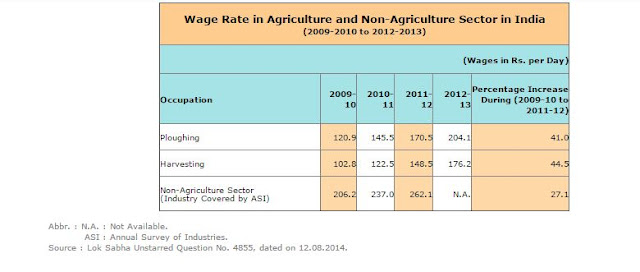It is a well-noted fact that India has a severe problem of malnutrition. This malnutrition is not limited to economically backward states. Rich states like Maharashtra, and Gujarat are also suffering from malnutrition. Global Malnutrition Report 2021 does highlight the fact that India has not made any progress in tackling childhood wasting. Around 17% of Indian children under 5 years of age are suffering from childhood wasting (Wasting is referred to low weight for height). As far as stunting is concerned, over 34% of children under 5 years of age are still suffering from childhood stunting (Stunting is referred to low height for age). So despite having impressive growth, we couldn't solve the malnutrition issue.
I found a good article in Indian Express (https://indianexpress.com/article/opinion/solving-the-child-malnutrition-puzzle-7154617/) where the author compares Indian states with sub-African countries. Despite having higher per capita income, Indian states have a higher level of malnourishment compared to the sub-Saharan African countries. Taking this as a starting point, I am going a little ahead to the district level and trying to understand: how income-malnutrition picture looks like at the district level.
Keeping wasting as a point for measurement, the categorization of districts is done. The proportion of children suffering from wasting is calculated for every district. Then mean value is calculated. The districts having a proportion of children suffering from wasting more than or equal to three standard deviations higher than the mean value are categorized as the most concerned districts. One and two SD higher districts are categories are concerned districts. Other districts are not the districts with no wasting but they are the districts having wasting equal to or less than the mean value.
Five states have the most concerning districts: Maharashtra, Gujarat, Assam, Jharkhand, and Bihar. In this post, I will be focusing on Maharashtra, Gujarat, Jharkhand, and Bihar.
For income, three categories are formed based on the per capita District Domestic Product of districts in Maharashtra (2015 year) because Mumbai has a higher per capita DDP. Keeping this as a Maximum, three income categories are formed.
Higher Income Districts; Districts having a per capita DDP higher than 106000.
Medium Income Districts: Districts having per capita DDP between 63000 and 106000.
Low-Income Districts: Districts having a per capita DDP less than 63000.
1) Maharashtra:
In Maharashtra, three things are visible:
a) Most concerned district is a district with High income (District with color

)
b) Concerned district is a district with medium income (District with color

)
c) Concerned districts with low income are surrounded by medium income districts without any concerned malnutrition (Districts with color

are surrounded by

)
2) Gujarat:

In Gujarat, three things are visible:
a) Most concerned district is a district with High income (District with color

)
b) Concerned district is a district with medium income (District with color

)
c) Concerned districts with medium income are surrounded by high-income districts without any concerned malnutrition (Districts with color

are surrounded by

)
3) Bihar:
In Bihar four things are visible:

a) The most concerned districts are low-income districts (District with color

)
b) The concerned districts are low-income districts (District with color

)
c) The non-concerned districts are high-income districts (District with color

)
d) The non-concerned districts are medium income districts (District with color

)
4) Jharkhand:
In Jharkhand, four things are visible:
a) The most concerned districts are low-income districts (District with color

)
b) The concerned districts are low-income districts (District with color

)
c) The concerned district with medium income is surrounded by low-income district without any concerned malnutrition (District with color

is surrounded by

)
c) The non-concerned districts are high-income districts (District with color

)
d) The non-concerned districts are medium income districts (District with color

)
Now we can clearly identify two broad issues:
In rich states (Gujarat and Maharashtra), severe malnutrition does exist in high-income districts and even if it exists in low-income districts, these districts are surrounded by high-income districts.
While in economically backward states (Bihar and Jharkhand), severe malnutrition exists in low-income districts while high-income districts don't have a high prevalence of malnutrition.
Further simplifying the argument, achieving the high-income level does prevent the districts from having severe malnutrition in backward states while the low-income level does coexist with severe malnutrition. The growth argument can be implemented for these states. That means if these backward states focus on growth which helps to increase the income of low-income category districts might solve the problem of malnutrition.
But... this growth argument is not visible in rich states (Maharashtra and Gujarat). The high-income level couldn't result in a low level of malnutrition. Having high-income districts as neighbors is also not helping the most concerned district to tackle the issue. The spill-over of "prosperity" is not visible. These states need to go beyond "Growth". Growth might have generated the surplus. This surplus should be directed properly.
Poor states have a "low Growth issue" while rich states are suffering from a "problem of redistribution".




.jpeg)


टिप्पण्या
टिप्पणी पोस्ट करा